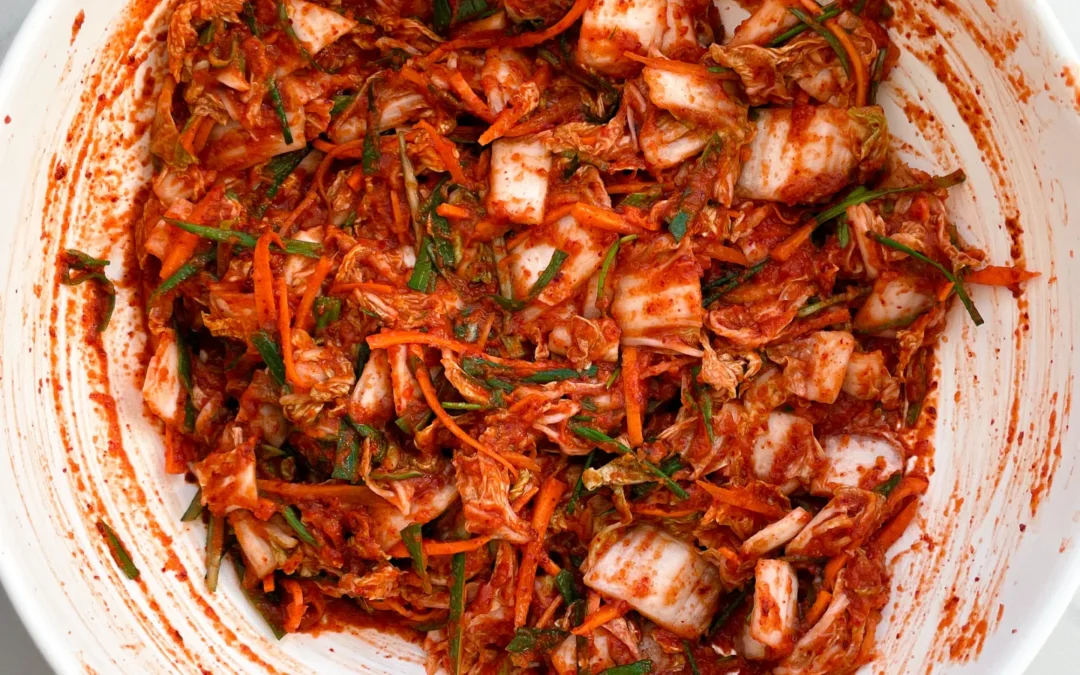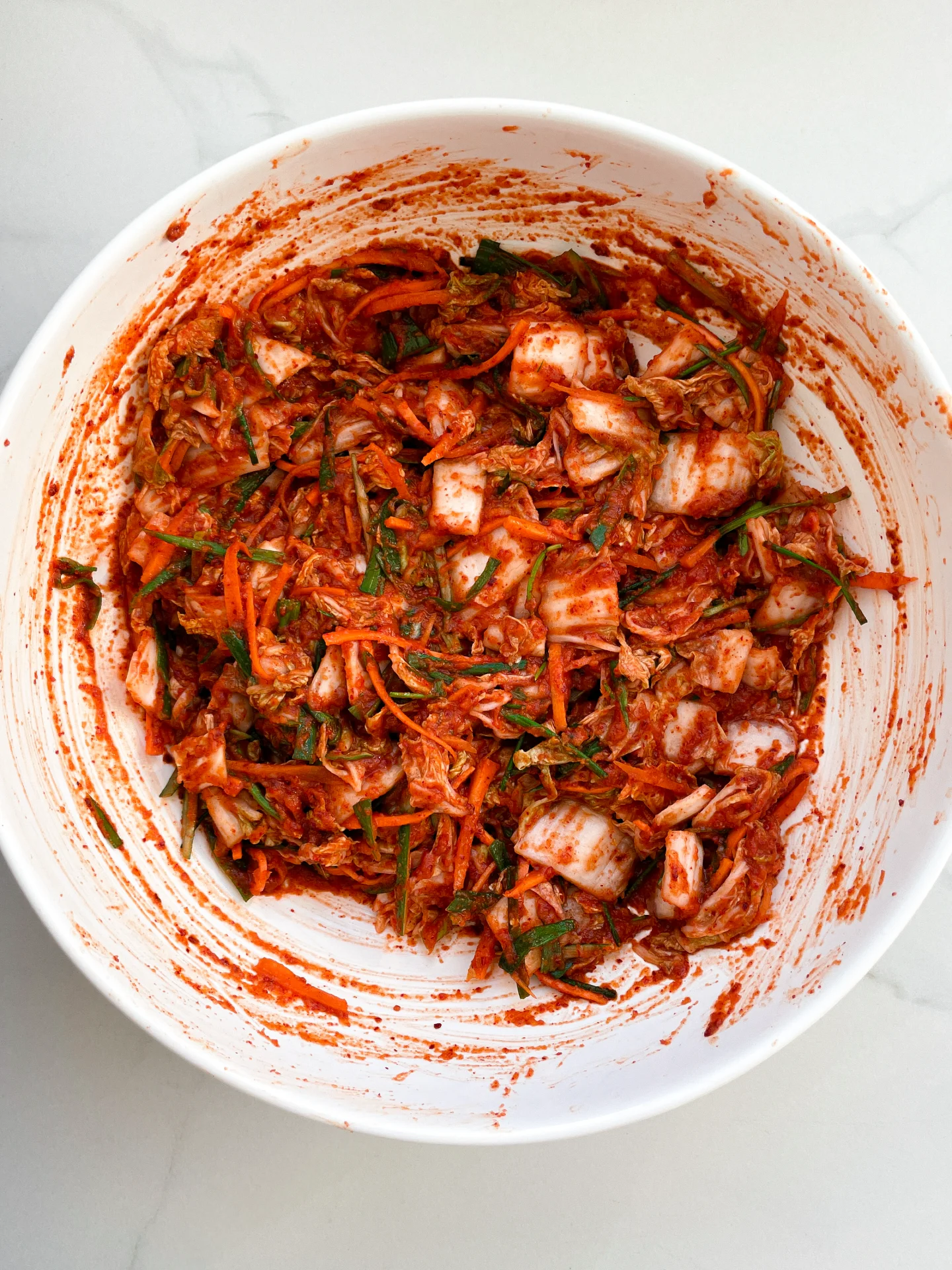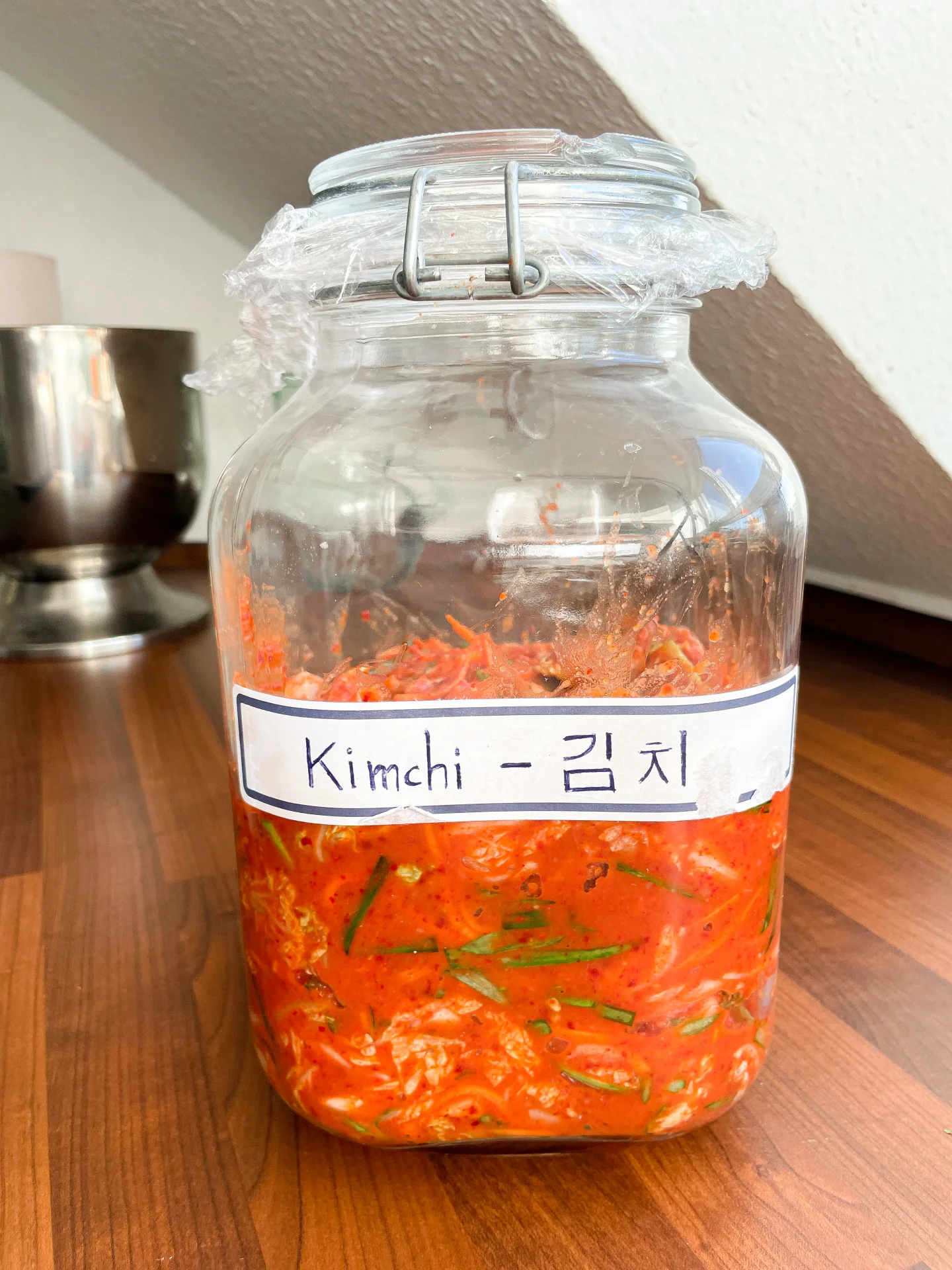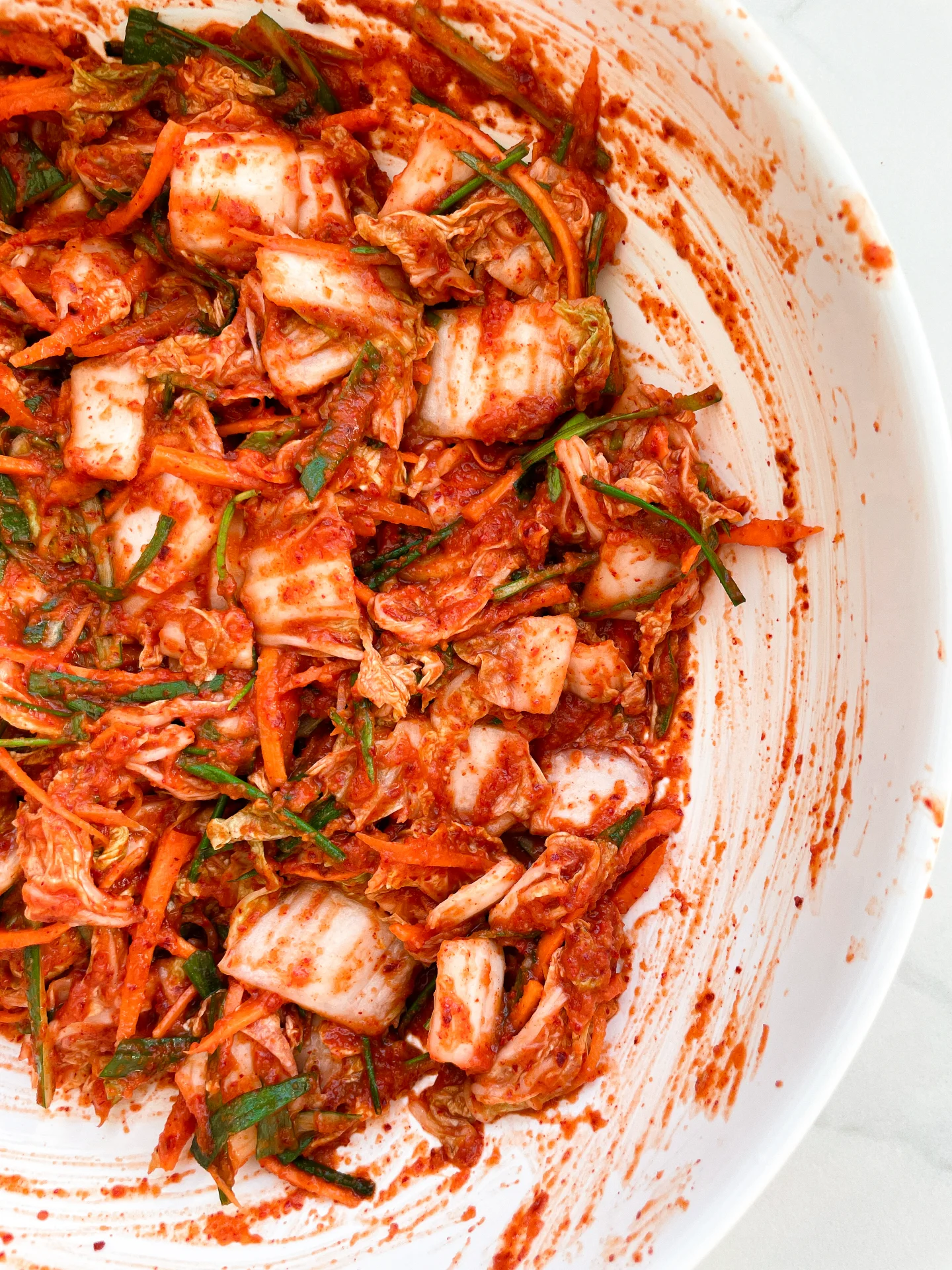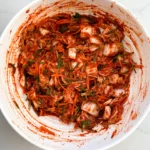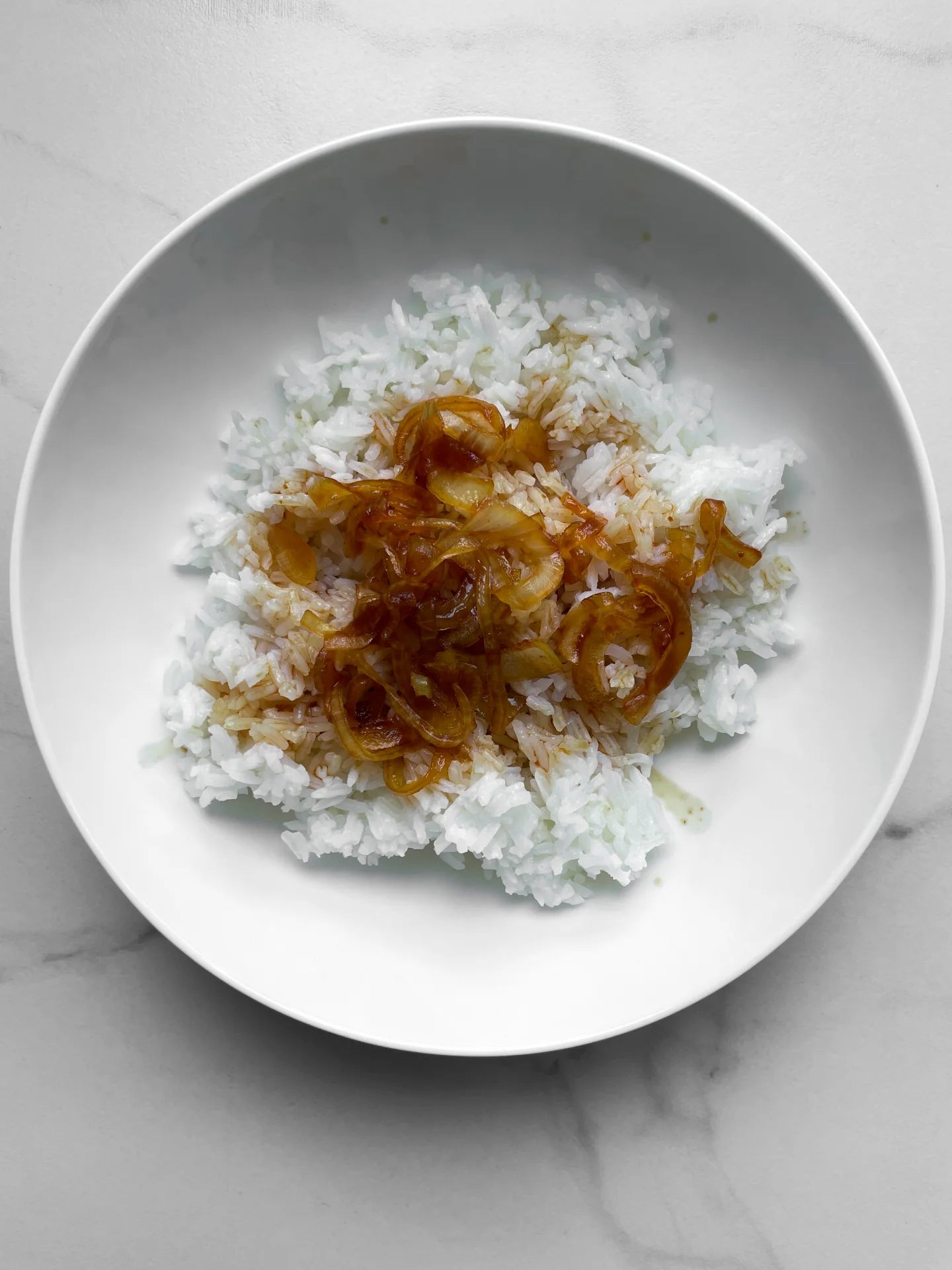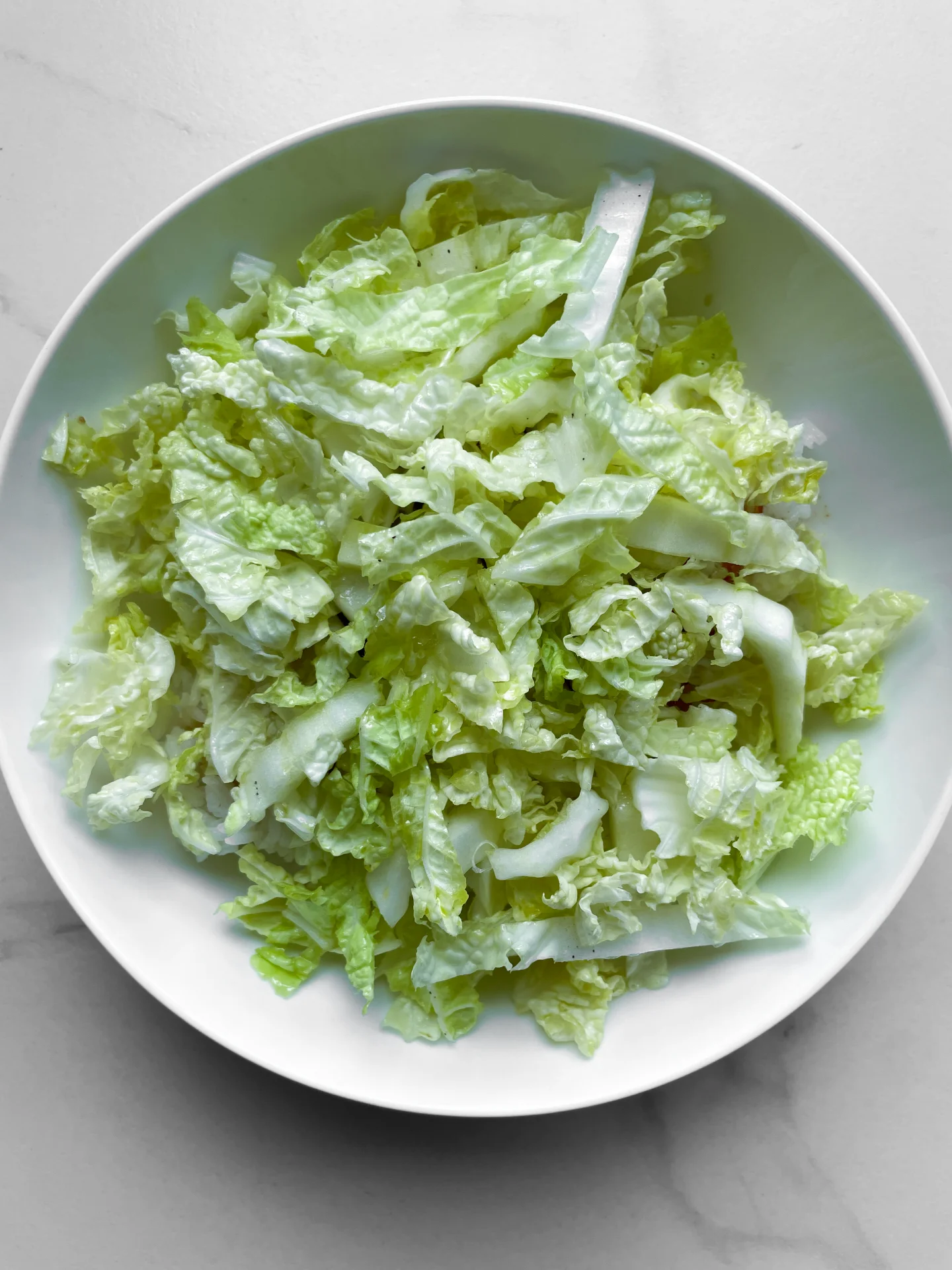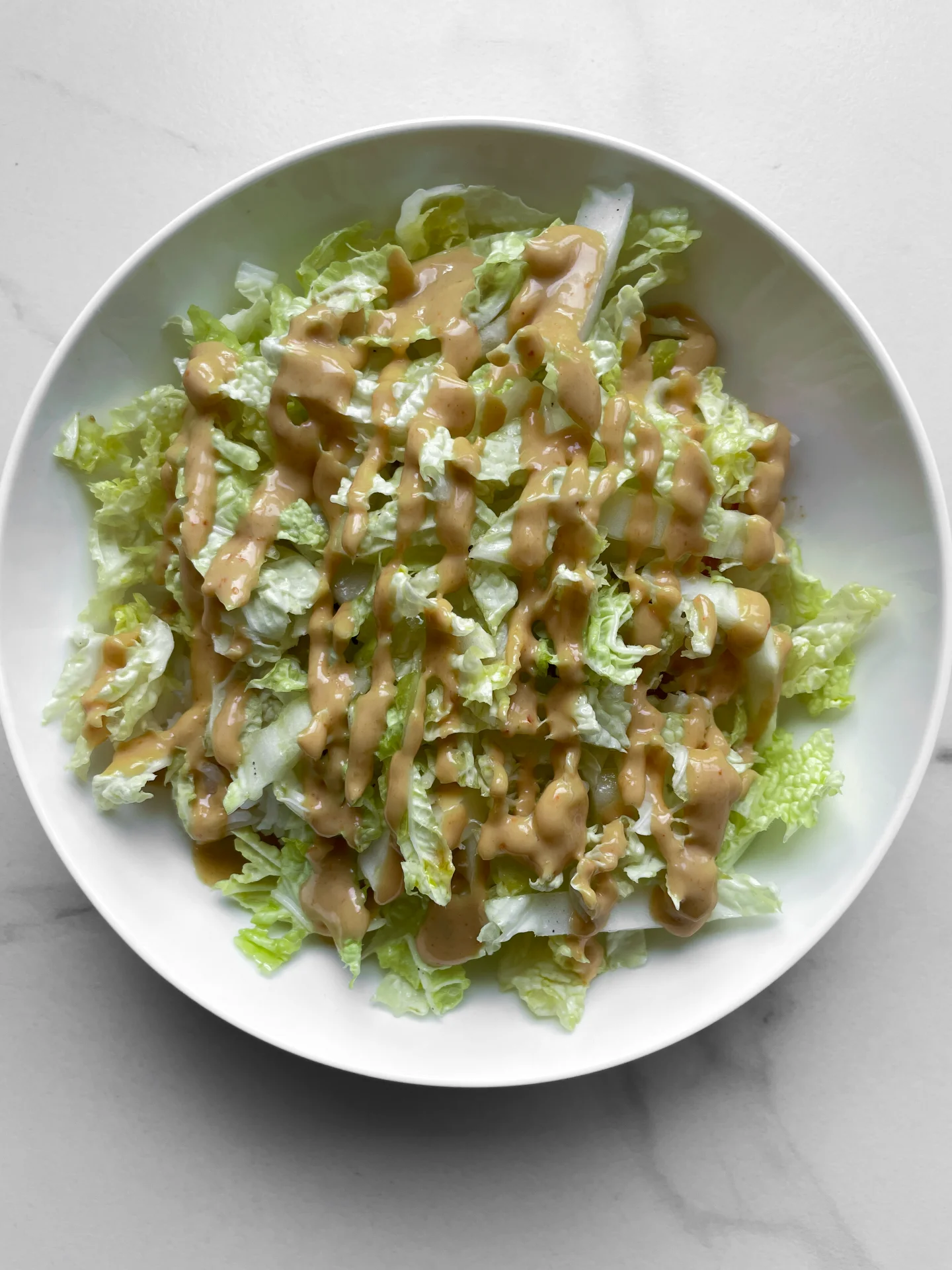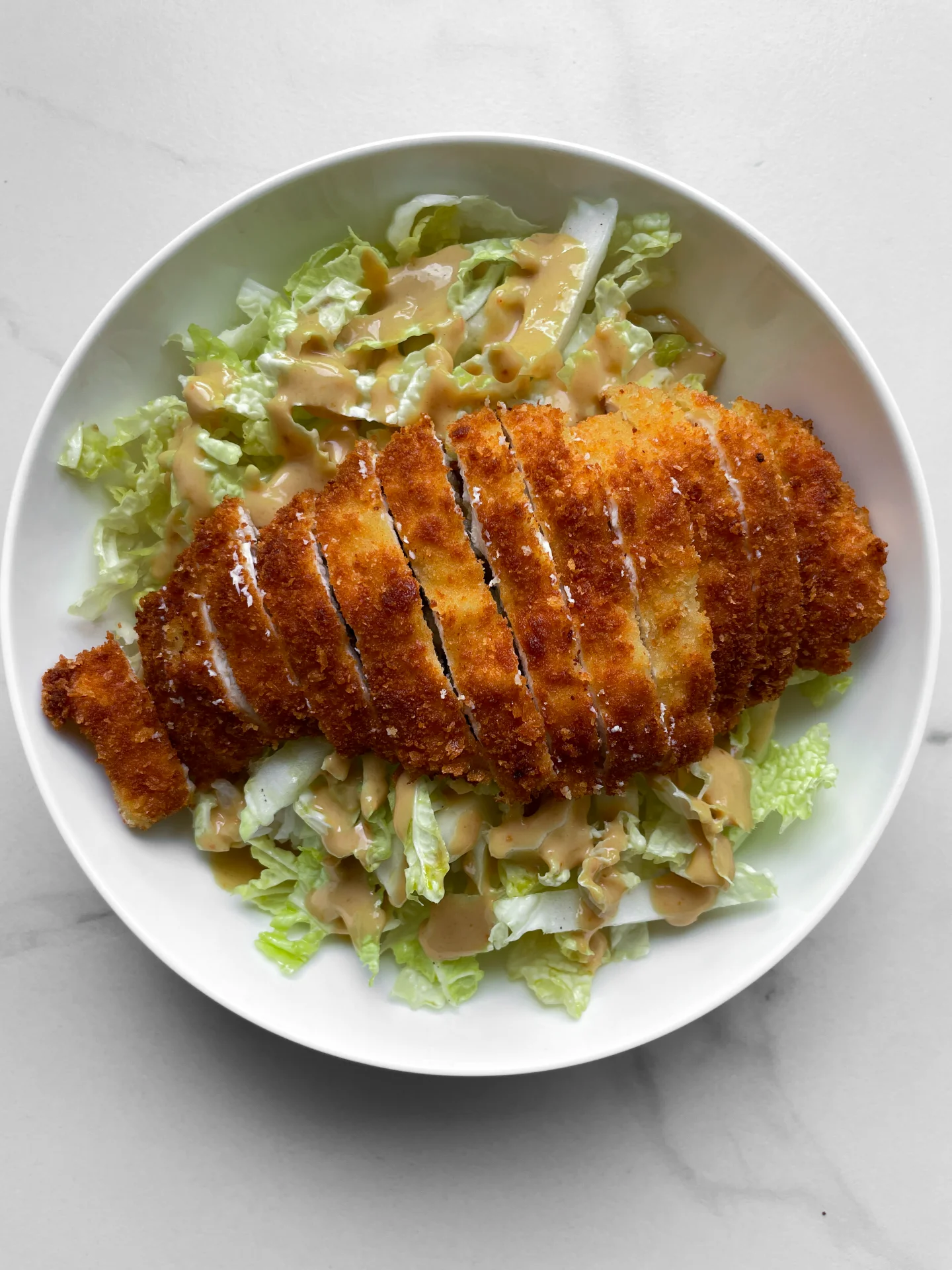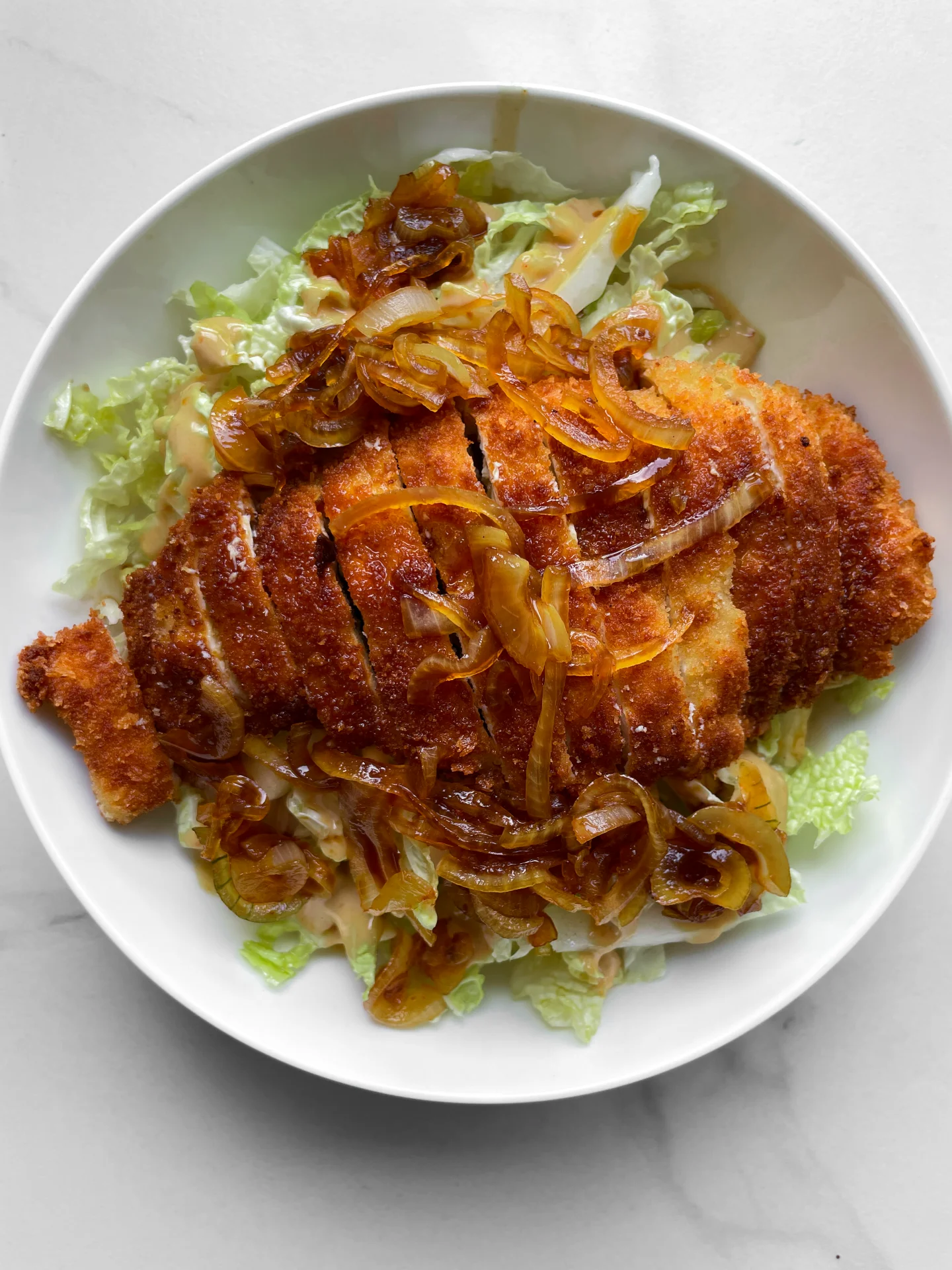Description
RECOMMENDED EQUIPMENT
- two large mixing bowls
- a sharp knife
- cutting board
- blender
- small saucepan
- airtight container for storage
Ingredients
- 1 napa cabbage
- 2 carrots
- 6 green onions
- 4 liter cold water
- 100 grams sea salt
- 2 yellow onions
- 1 apple or nashi pear
- 1 garlic bulb
- 1 thumb-sized piece of ginger
- 2 tbsp fish sauce
- 1 tbsp soy sauce
- 1 tbsp mini shrimp
- 4 tbsp water
- 8 tbsp gochugaru (Korean chili flakes)
- 3 tbsp rice flour
- 200 milliliter water
Instructions
- Quarter the napa cabbage lengthwise, then chop it into bite-sized pieces. Place it in one of the large bowls and cover completely with cold water. Add a generous amount of sea salt and mix well with your hands or a spoon. To keep the cabbage submerged, weigh it down with a plate and something heavy. Let it soak for 30–45 minutes.
- While the cabbage is soaking, peel and julienne the carrots. Thinly slice the green part of the scallions. Set both aside, they’ll be folded into the paste later.
- Peel the apple, onion, garlic, and ginger. Toss everything into a blender with a splash of water. If you’re using mini shrimp, add those now. Pour in the fish sauce and soy sauce, then blend until smooth and pulpy.
- Transfer the paste to your second large bowl. Stir in the gochugaru (Korean chili flakes) until the mixture is a vibrant, rich red and has a spreadable texture.
- In a small saucepan, combine water and rice flour to make the slurry. Heat gently, stirring constantly, until it thickens into a sticky, glue-like consistency. Let it cool for a few minutes, then stir it into the chili paste mixture.
- Add the sliced carrots and scallions to the paste. Stir well until everything is evenly coated and combined.
- Drain the soaked cabbage, rinse it under cold water, and gently squeeze out the excess liquid. Add it to the bowl with the red paste and (with gloves, highly recommended!) mix everything thoroughly until all the cabbage is coated.
- Spoon the kimchi mixture into a clean, airtight container. Press it down firmly to eliminate air pockets. Wipe the edges, cover with plastic wrap, and seal tightly. Leave it at room temperature for about two days to ferment.
- After two days, your kimchi will be lightly fermented and ready to taste. If you like it funkier and more sour, give it another day on the counter. After that, pop it in the fridge, it’ll keep for several weeks and just keeps getting better.
- Passive Time: 2 days
- Cook Time: 45 min




